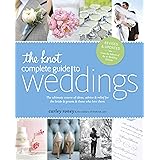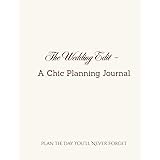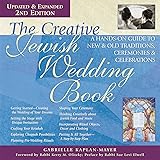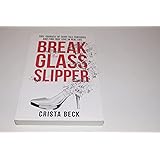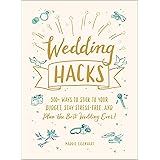Planning a wedding ceremony can feel overwhelming. Many couples dream of a perfect day. Yet, the ceremony itself often gets overlooked. It’s easy to rush through it. This happens while focusing on the reception details. But your ceremony is the heart of the wedding. It is where you truly become married. The goal is to make this moment unforgettable.
As Jamie Wolfer shared in the video above, your wedding ceremony doesn’t have to be boring. With a little planning, it can be amazing. Guests will talk about it for years. You can create a memorable experience. It just takes some thought and good resources. Let’s explore how to make your ceremony truly special.
Crafting a Smooth Wedding Ceremony Flow
The general order of a wedding ceremony is crucial. It ensures everything flows well. Start with the processional. This is when your wedding party enters. Music sets a formal tone. You can find many outline options. These cover various walking arrangements. Your entrance should reflect your style.
Following the processional, a welcome or blessing is common. This sets the mood. If you plan an unplugged ceremony, make an announcement now. Ask guests to put away their phones. This helps everyone stay present. The officiant can make this clear. It happens before the main events begin.
Next comes the “giving away” moment. This is an optional tradition. You can choose to be escorted. Or you can walk in alone. If you are given away, practice the hand-off. This avoids awkwardness later. Rehearsals are vital for this small detail. It makes a big difference on the wedding day.
Ensuring an Engaging Officiant
The officiant’s role is key. They guide your ceremony. A great officiant tells your love story. They keep guests engaged. Many couples choose a friend or family member. This is a sweet, sentimental choice. However, it can also lead to problems.
An inexperienced officiant might get nervous. Public speaking is different from a wedding ceremony. They might speak too fast. Or they could fumble over words. Jamie shared a story about an overly anxious officiant. He needed a lot of hand-holding. This adds stress to your day.
Consider sending your DIY officiant to resources. Unboring Wedding is an excellent tool. Mark Allan Grollo helps people perform flawlessly. He offers formulas for engaging ceremonies. Your officiant can learn to tell stories. They will involve the crowd. This elevates your entire wedding ceremony experience.
Personalizing Your Wedding Vows
After the officiant’s remarks, it’s time for vows. Many standard options exist. These are easy to use. Some couples choose to write their own vows. This personal touch is beautiful. Yet, it can also cause stress.
You might worry about matching your partner’s vows. Will one be longer? Will one be more eloquent? Providence offers a digital toolkit. It provides a ceremony builder. They also have a fantastic vow builder. This tool helps you create personalized vows.
The vow builder guides you through prompts. It helps you reflect on your relationship. It organizes your feelings. You can set the desired length and tone. Your partner does the same. This ensures your vows are perfectly matched. It eases the pressure of starting from scratch. This makes writing vows a joyful process.
Key Moments and Practical Tips for Your Ceremony
Following vows, rings are exchanged. Here’s a quick tip. If a ring meets resistance, stop pushing. Hands can get sweaty or swollen. Don’t force it down. Just leave it there gently. Your fiancé can adjust it later. This avoids pain and distraction.
Readings often happen before vows and rings. Choose meaningful passages. These could be from scripture or poetry. They add a personal touch. Readings can reflect your beliefs. They enhance the ceremony’s depth.
A unity ceremony is an optional moment. It symbolizes two lives joining. Unity candles are traditional. An anniversary box is another popular choice. This unique moment adds meaning. It visualizes your union. Consider what represents your bond best.
The Pronouncement and Recessional
The pronouncement comes next. This is the “I now pronounce you” part. Then comes the first kiss as a married couple. It is a highly anticipated moment. Make it truly special.
Next, you are introduced to your guests. Be clear with your officiant. Tell them how you want to be introduced. This includes any name changes. For example, “Mr. and Mrs. Smith” or “Jamie and Elias Wolfer.” Ensure it reflects your choice. This moment is your debut as a married couple.
Finally, the recessional takes place. You walk back down the aisle. Decide who follows you out. Most commonly, it’s just the couple. Sometimes the wedding party follows. Family members typically do not recess. This formal exit marks the ceremony’s end.
Timing and Timeline Management
The length of your ceremony matters. For non-denominational services, 20-25 minutes is ideal. Too short, and it feels rushed. Too long, and guests may get antsy. This sweet spot keeps everyone engaged. It allows for a meaningful experience.
Traditional or religious ceremonies differ. They can be 45 minutes to over an hour. These lengths are often dictated. Follow the church’s or officiant’s guidelines. Plan your timeline accordingly. This ensures a seamless wedding day.
Effective timeline communication is crucial. Jamie emphasizes this point. Delays can easily happen. Hair and makeup might run late. Vendors need clear instructions. The Perfect Wedding Timeline tool helps here. It allows you to send text reminders. Everyone knows where to be and when. This proactive approach prevents hiccups. It helps ensure a truly perfect wedding ceremony.


